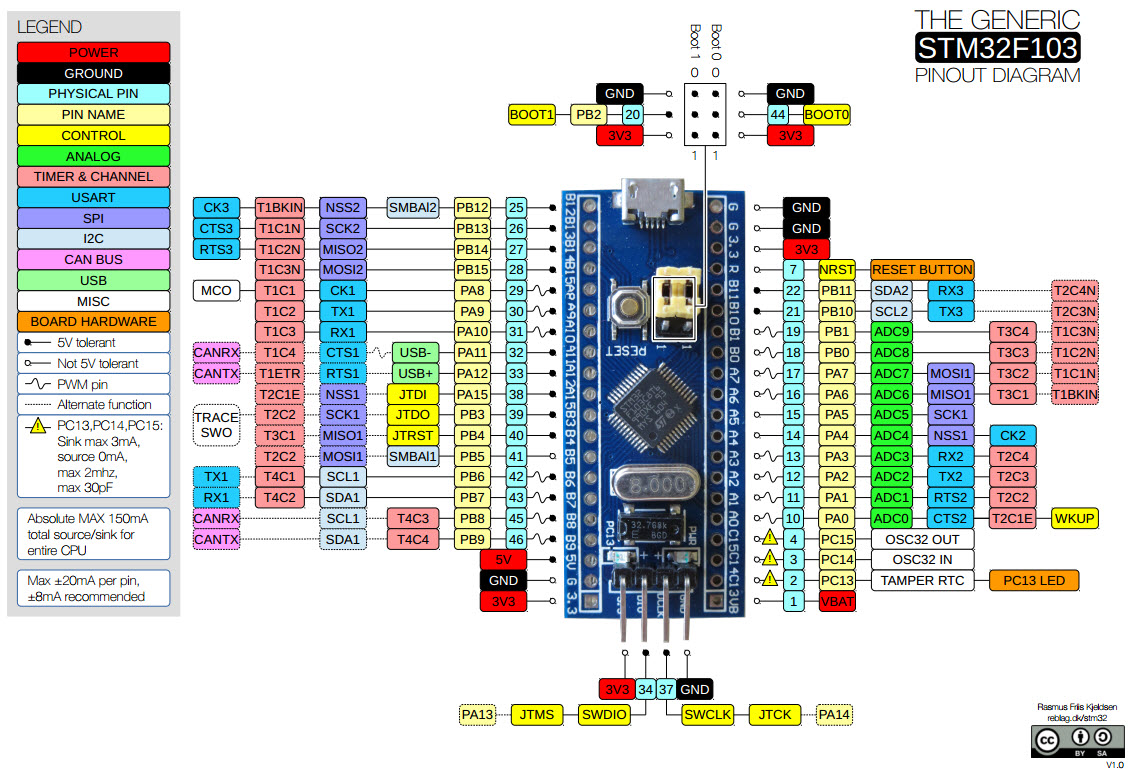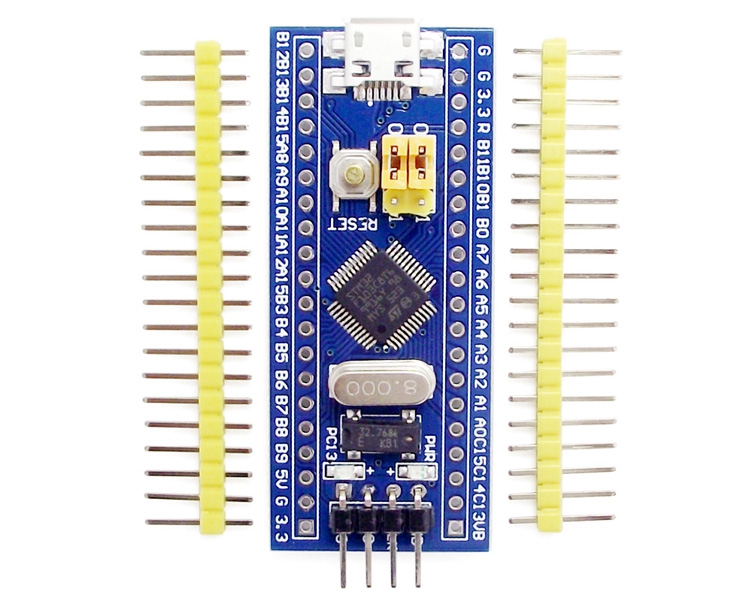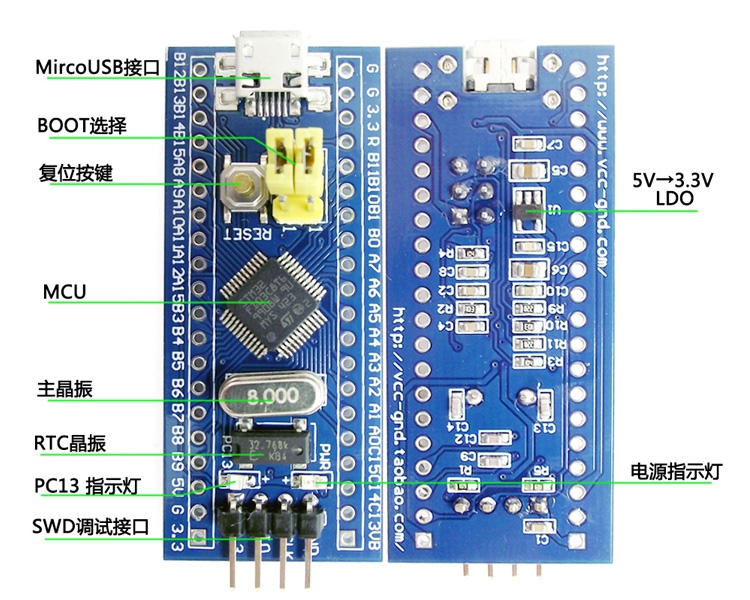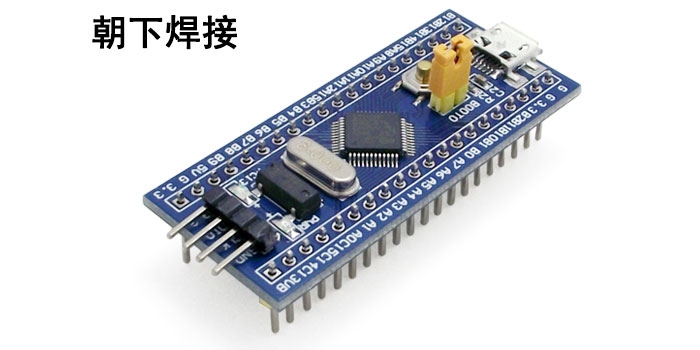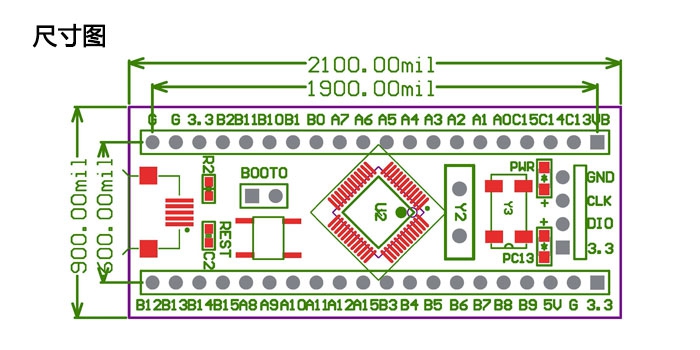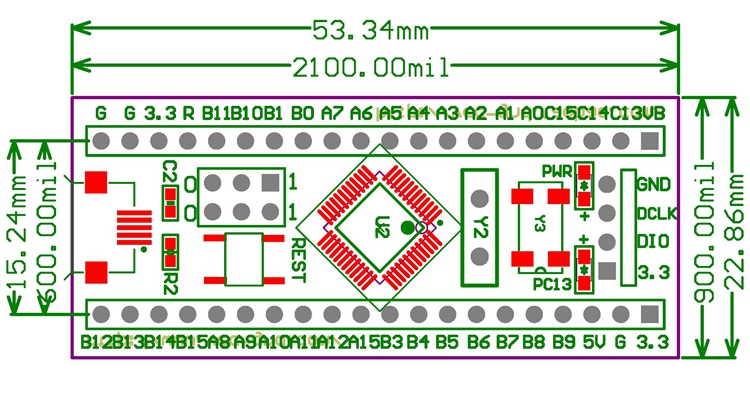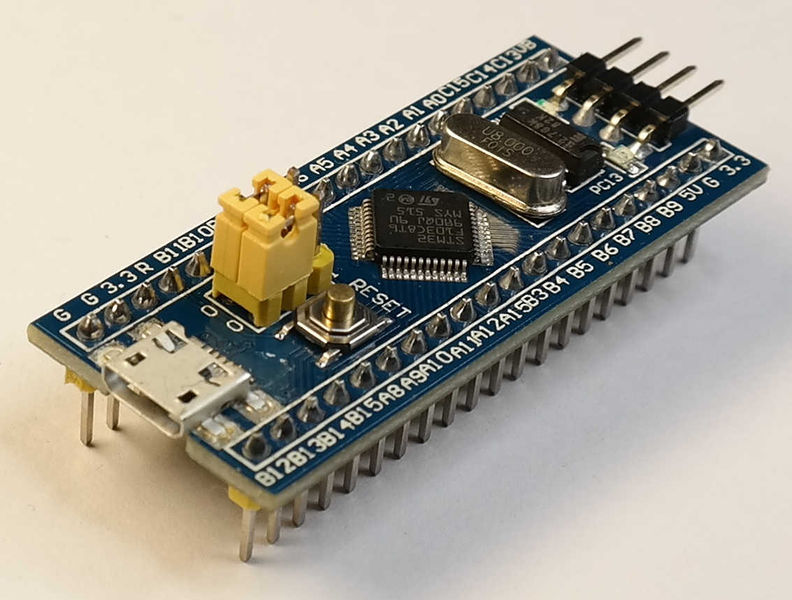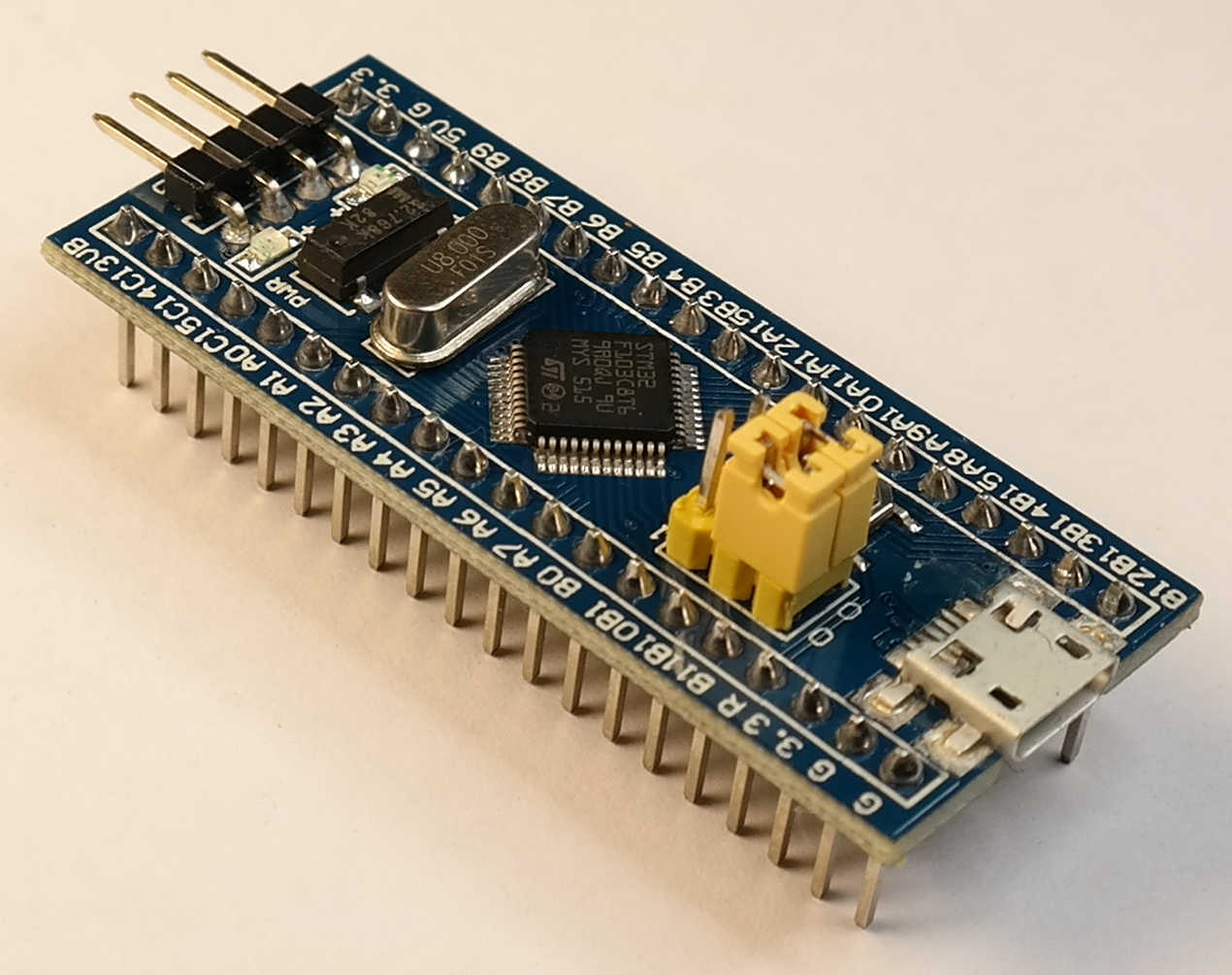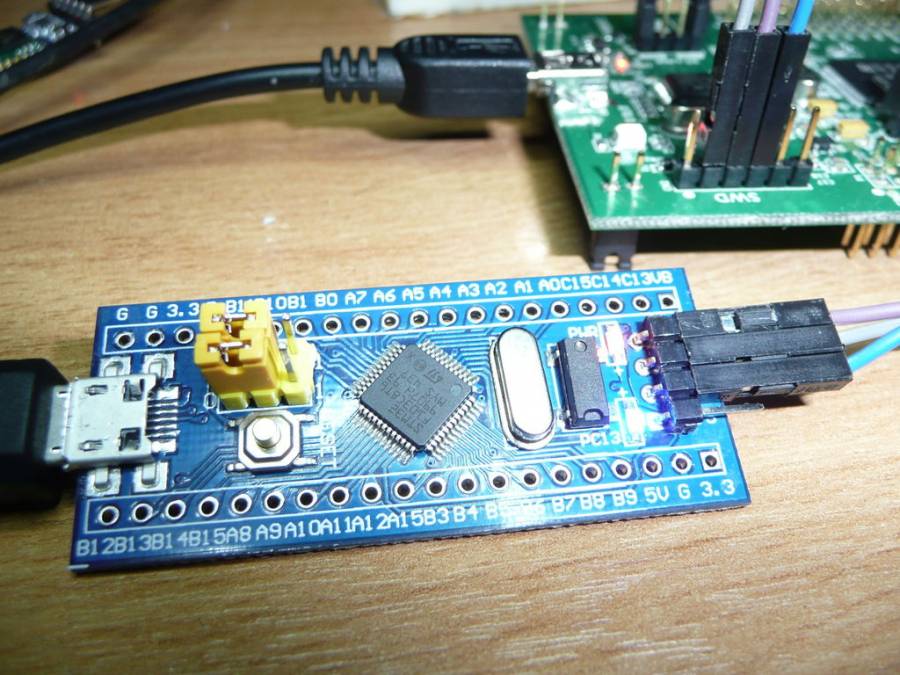
STM32F103C8T6 STM32duino (64Kbyte) with Bootloader(Maple COMx)
| จำนวนชิ้น | ส่วนลดต่อชิ้น | ราคาสุทธิต่อชิ้น |
| {{(typeof focus_pdata.price_list[idx+1] == 'undefined')?('≥ '+price_row.min_quantity):((price_row.min_quantity < (focus_pdata.price_list[idx+1].min_quantity - 1))?(price_row.min_quantity+' - '+(focus_pdata.price_list[idx+1].min_quantity - 1)):price_row.min_quantity)}} | {{number_format(((focus_pdata.price_old === null)?focus_pdata.price:focus_pdata.price_old) - price_row.price,2)}} บาท | {{number_format(price_row.price,2)}} บาท |
| คงเหลือ | ชิ้น |
| จำนวน (ชิ้น) |
- +
|
|
ซื้อเลย หยิบลงตะกร้า ซื้อเลย หยิบลงตะกร้า คุณมีสินค้าชิ้นนี้ในตะกร้า 0 ชิ้น
|
|
|
|
|
| คุยกับร้านค้า | |
| {{ size_chart_name }} |
|
| หมวดหมู่ | Arduino Compatible Board |
| สภาพ | สินค้าใหม่ |
| เพิ่มเติม | |
| สภาพ | สินค้ามือสอง |
| เกรด | |
| สถานะสินค้า | |
| ระยะเวลาจัดเตรียมสินค้า | |
| เข้าร่วมโปรโมชั่น | |
รายละเอียดสินค้า
| ข้อมูล |
น้ำหนัก
บาร์โค้ด
ลงสินค้า
อัพเดทล่าสุด
|
| รายละเอียดสินค้า |
STM32F103C8T6 ARM STM32 Minimum System Development Board Module For Arduinoลง Bootloader (DFU) Maple ให้ทุกบอร์ดก่อนจัดส่ง คือสามารถใช้งานได้เลย Arduino STM32 – USB Serial and DFUhttp://www.rogerclark.net/arduino-stm32-usb-serial-and-dfu/
STM32F103C8T6. These features make the STM32F103xx medium-density performance line microcontroller family suitable for a wide range of applications such as motor drives, application control, medical and handheld equipment, PC and gaming peripherals, GPS platforms, industrial applications, PLCs, inverters, printers, scanners, alarm systems, video intercoms, and HVACs. Key Features
link ข้อมูลเกีี่ยวกับ STM32duino 1. ขั้นตอน bootloader เอง https://geektimes.ru/post/277928/ 2. เว็บบอร์ด http://www.stm32duino.com/ 3. software ที่ต้องใช้ร่วมกับ IDE ของ arduino https://github.com/rogerclarkmelbourne/Arduino_STM32 4. code ตัวอย่าง http://grauonline.de/wordpress/?page_id=1004 https://github.com/rogerclarkmelbourne/STM32duino-bootloader Uploading via USB to Serial to STM32F103 boards https://www.youtube.com/watch?v=G_RF0a0hrak /*
//----------- TEST I2C LCD 1602A---------------- // STM32F103C8T6 TEST LCD 1602A(I2C) //Compatible with the Arduino IDE 1.0 //Library version:1.1 #include #include
#define LEDPIN PC13
// PCF8574T set the LCD address to 0x27 for a 16 chars and 2 line display // #define I2C_LCD_ADDRESSS 0x27 // PCF8574AT set the LCD address to 0x3F for a 16 chars and 2 line display #define I2C_LCD_ADDRESSS 0x3F
LiquidCrystal_I2C lcd(I2C_LCD_ADDRESSS,20,4); //---------------------------- //STM32F103C8T6 // SCL = PB6 // SDA = PB7 //---------------------------- void setup() { pinMode(LEDPIN, OUTPUT);
lcd.init(); // initialize the lcd lcd.backlight(); lcd.home (); // ไปที่ตัวอักษรที่ 0 แถวที่ 1
lcd.setCursor(1,0); // ไปทตัวอักษรที่ 1 แถวที่ 1 lcd.print("STM32F103C8T6"); lcd.setCursor(2,1); // ไปที่ตัวอักษรที่ 2 แถวที่ 2 // lcd.print("mcucity.com"); lcd.print("ARM Contex-M3"); }
void loop() { digitalWrite(LEDPIN, HIGH); // turn the LED ON (PC13) (HIGH is the voltage level) delay(500); // wait for 500mS digitalWrite(LEDPIN, LOW); // turn the LED OFF by making the voltage LOW delay(500); // wait for 500mS } //------------------ END --------------------------------
APIContentsDifferences compared to Arduino APIData types
PWMArduino boards support 8-bit PWM, which means that calls to analogWrite() take values between 0 (always off) and 255 (always on). STM32 boards support 16-bit PWM so values can range from 0 (always off) and 65535 (always on). For backward compatibility, in STM32duino, analogWrite() still takes values between 0 (always off) and 255 (always on); the new pwmWrite() function provides instead support to the higher resolution 0 (always off) and 65535 (always on). ADCArduino boards support 10-bit ADC, which means that calls to analogRead() will return values between 0 and 1023. The Maple supports 12-bit ADC, so the same call will instead return values between 0 and 4095. Important information about global constructor methodsClasses, including libraries, must not called pinMode() or digitalWrite() or digitalRead() etc, or any similar function in a global constructor. Do not store references to pins in global constructors This is because the mapping of the pins is dynamic, and is not guaranteed to be initialized for global constructor code. Libraries often do not function because they attempt to call pinMode in their constructor. Serial & USB SerialSerial USB is enabled for all F103 boards when uploading using the bootloader, it is also available when uploading by ST-Link (SWD) In these cases:
When uploading via "Serial" (external USB to Serial adaptor connected to PA9 and PA10 (USART1) on the STM32):
Note. Some boards, e.g. Nucleo F103RB have special serial mapping, because these boards need to have hardware modification to make Serial usable. The Serial USART mapping is defined in file "variants//board.cpp". Pin accessPin Modes
Reading from & Writing to pinsYou can use the standard analogWrite, digitalWrite, analogRead & digitalRead from Arduino, but they can be slow, there are some faster alternatives. These are by directly going to the GPIO ports, which are 16bits wide (so 16 pins per port) gpio_write_bitThis is a function you can call, that doesn't take the pinnumber, but the GPIOPort, and which pin of the port you want to access. Direct access to the registershere are the registeres with which you can read/write the state of the pins BSRRSets & Resets pins. It's a register that's 32 bits wide, the first 16 bits will set a pin to "1" when value 1 is written to it, the next 16 bits will set a pin to 0 when a value is written to it. Set pin 0 of port A high BRRResets pins. It's a register that's 16 bits wide, basically matches the second half of the BSRR register. Reset pin 0 of Port A ODROutput data register, when writing to it, sets the value of ALL the pins to what you wrote to the register: Set pin 0 of port A high, all the others low IDRInput data register, returns the value of ALL the pins related to the specified port: Check if pin n (n=0..15) of Port A is high Storing data in flash memoryDeclare variables as const to put them into flash memory. This old method (below) is deprecated The __FLASH__ macro to store variables into the flash memory, instead of the RAM,
 |
| เงื่อนไขอื่นๆ |
|
| Tags |
Recently viewed



